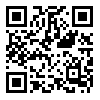Volume 16, Issue 4 (2025)
ihej 2025, 16(4): 113-137 |
Back to browse issues page
Download citation:
BibTeX | RIS | EndNote | Medlars | ProCite | Reference Manager | RefWorks
Send citation to:



BibTeX | RIS | EndNote | Medlars | ProCite | Reference Manager | RefWorks
Send citation to:
Narenji Thani F, Allahyari R, Tamimi M, Lohrasbi M. Feasibility Study of Implementing Blended Learning at the University of Tehran from the Perspective of Faculty Members. ihej 2025; 16 (4) :113-137
URL: http://ihej.ir/article-1-2082-en.html
URL: http://ihej.ir/article-1-2082-en.html
1- Associate Professor, Educational Management and Planning Dept, Faculty of Psychology and Educational Sciences, University of Tehran, Tehran, Iran.
2- Assistant Professor, Educational Management and Planning Dept, Faculty of Psychology and Educational Sciences, University of Tehran, Tehran, Iran. ,ralahyari@ut.ac.ir
3- Master's degree in Planning and Administration of Higher Education, Faculty of Psychology and Educational Sciences, University of Tehran, Tehran, Iran.
4- PhD Student in Educational Administration Faculty of Psychology and Educational Sciences, University of Tehran, Tehran, Iran.
2- Assistant Professor, Educational Management and Planning Dept, Faculty of Psychology and Educational Sciences, University of Tehran, Tehran, Iran. ,
3- Master's degree in Planning and Administration of Higher Education, Faculty of Psychology and Educational Sciences, University of Tehran, Tehran, Iran.
4- PhD Student in Educational Administration Faculty of Psychology and Educational Sciences, University of Tehran, Tehran, Iran.
Abstract: (1584 Views)
Objective: The aim of this study is to examine the feasibility of implementing a blended learning model at the University of Tehran from the perspective of faculty members. Considering educational developments and the need to utilize modern technologies, this research evaluates the barriers and opportunities for implementing this model at the University of Tehran.
Method: This research is applied in terms of aim and descriptive-survey in terms of data collection. The statistical population includes all faculty members employed in the Faculties of Engineering and Social and Behavioral Sciences at the University of Tehran, totaling 772 individuals during the academic year 2022-2023. A proportional stratified random sampling method was employed, and the sample size was determined to be 256 based on the statistical population. The data collection tool was a researcher-designed questionnaire, developed based on Badrul Khan's model encompassing eight different factors. The questionnaire's validity was confirmed through face and content validity by experts, and its reliability was assessed using Cronbach's alpha test (coefficient = 0.926). Data analysis was performed using descriptive statistics, one-sample t-tests, and independent two-sample t-tests with SPSS software version 26.
Results: The results of this study indicate that, from the perspective of faculty members, the implementation of the blended learning model at the University of Tehran is at a level below the average. A comparison between the Faculties of Engineering and Social and Behavioral Sciences revealed that there is no significant difference in the current status of blended learning model implementation at the University of Tehran as perceived by faculty members in these two faculties.
Conclusion: Faculty members at the University of Tehran have highlighted numerous challenges in implementing this model across various dimensions, including pedagogy, technology, user interface design, evaluation, management, resource provision, ethics, and organizational structure. Key issues identified include a lack of appropriate course design, insufficient technological infrastructure, the complexity of online learning systems, and weaknesses in evaluation systems.
Method: This research is applied in terms of aim and descriptive-survey in terms of data collection. The statistical population includes all faculty members employed in the Faculties of Engineering and Social and Behavioral Sciences at the University of Tehran, totaling 772 individuals during the academic year 2022-2023. A proportional stratified random sampling method was employed, and the sample size was determined to be 256 based on the statistical population. The data collection tool was a researcher-designed questionnaire, developed based on Badrul Khan's model encompassing eight different factors. The questionnaire's validity was confirmed through face and content validity by experts, and its reliability was assessed using Cronbach's alpha test (coefficient = 0.926). Data analysis was performed using descriptive statistics, one-sample t-tests, and independent two-sample t-tests with SPSS software version 26.
Results: The results of this study indicate that, from the perspective of faculty members, the implementation of the blended learning model at the University of Tehran is at a level below the average. A comparison between the Faculties of Engineering and Social and Behavioral Sciences revealed that there is no significant difference in the current status of blended learning model implementation at the University of Tehran as perceived by faculty members in these two faculties.
Conclusion: Faculty members at the University of Tehran have highlighted numerous challenges in implementing this model across various dimensions, including pedagogy, technology, user interface design, evaluation, management, resource provision, ethics, and organizational structure. Key issues identified include a lack of appropriate course design, insufficient technological infrastructure, the complexity of online learning systems, and weaknesses in evaluation systems.
Type of article: Research |
Subject:
Special
Received: 2025/01/7 | Accepted: 2026/03/19 | ePublished ahead of print: 2025/07/2
Received: 2025/01/7 | Accepted: 2026/03/19 | ePublished ahead of print: 2025/07/2
Send email to the article author
| Rights and permissions | |
 |
This work is licensed under a Creative Commons Attribution-NonCommercial 4.0 International License. |




